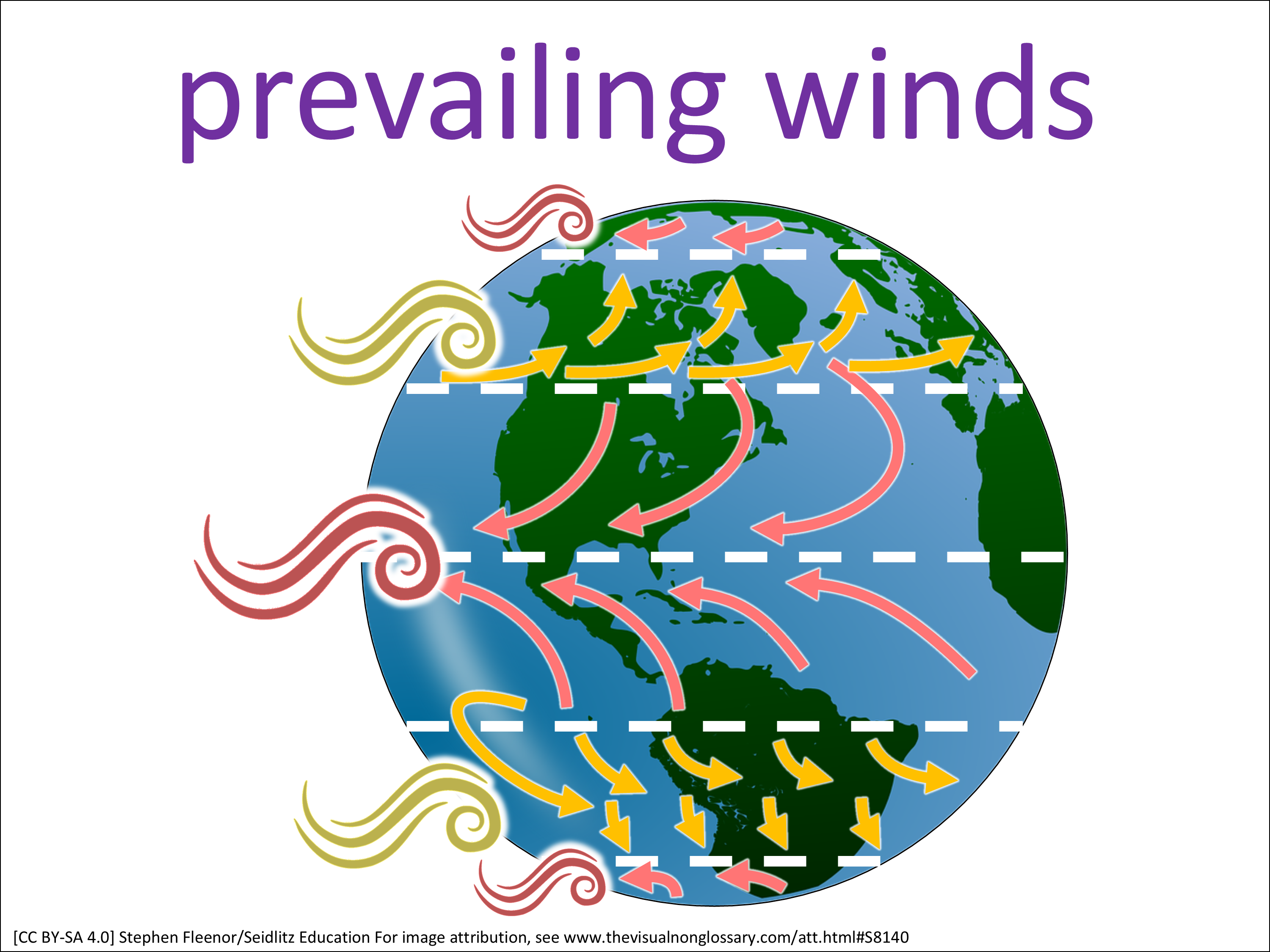prevailing winds: 8th Grade 🌐 Ver en Español
Earth and Space Sciences
Weather
Vertical Alignment
TEKS:
| 8th: | 8.10(A) 8.10(B) |
Linked To
Downloads
- Visual
- Word wall visual
- Lesson Plan
- Lesson Materials
Structured Conversation Questions
Observational
How are the different prevailing winds distributed across the Earth?
The distribution of prevailing winds across Earth is...Relational
How are prevailing winds related to air masses?
Prevailing winds are related to air masses because…Inferential
How do you think prevailing winds are influenced by solar energy?
I think solar energy influences prevailing winds by…
Please log in to comment.
Students might notice in this visual:
- The Earth has bands of prevailing winds at different latitudes.
- Some wind patterns move from east to west, while others move from west to east.
- The equator has winds that blow in a different direction than those near the poles.
- Wind names often match their location, such as “trade winds” or “westerlies.”
- The direction of the winds appears to curve rather than move in a straight line.
EXTENDING THE DISCUSSION
After the observational question, randomly call on one or more students to share what they or their partner answered. Then ask the class, “Did anyone notice…?” using the suggestions above or anything else you’ve noticed.
After the observational question, randomly call on one or more students to share what they or their partner answered. Then ask the class, “Did anyone notice…?” using the suggestions above or anything else you’ve noticed.
Students might wonder:
- Why do winds blow in different directions at different latitudes?
- How do prevailing winds affect the climate in different regions?
- What causes the curve in the wind paths?
- Do prevailing winds change during different seasons?
- How do prevailing winds interact with storms or hurricanes?
EXTENDING THE DISCUSSION
After students have shared what they notice, ask the class, “Did anyone wonder…?” using the suggestions above or anything else you might think is interesting or relevant to the lesson.
After students have shared what they notice, ask the class, “Did anyone wonder…?” using the suggestions above or anything else you might think is interesting or relevant to the lesson.
Example student responses
To the observational question, How are the different prevailing winds distributed across the Earth?
LOW-LEVEL
The distribution of prevailing winds across Earth is in different places and directions.
HIGH-LEVEL
The distribution of prevailing winds across Earth is in bands at different latitudes, like the trade winds, westerlies, and polar easterlies, and each band blows in a certain direction.
RESPONDING TO RESPONSES
Emphasize and celebrate each student’s use of the key vocabulary to support a culture of “no wrong answers.”
Emphasize and celebrate each student’s use of the key vocabulary to support a culture of “no wrong answers.”




Shannon Gashy
Are the direction arrows going in the correct direction for polar easterlies? Shouldn't they be curved downward towards the 60* latitude?
Thank you
08-06-24
Stephen Fleenor
They were *not* going in the correct direction, thank you for spotting that! Made the change for the northern polar easterlies.
10-21-24